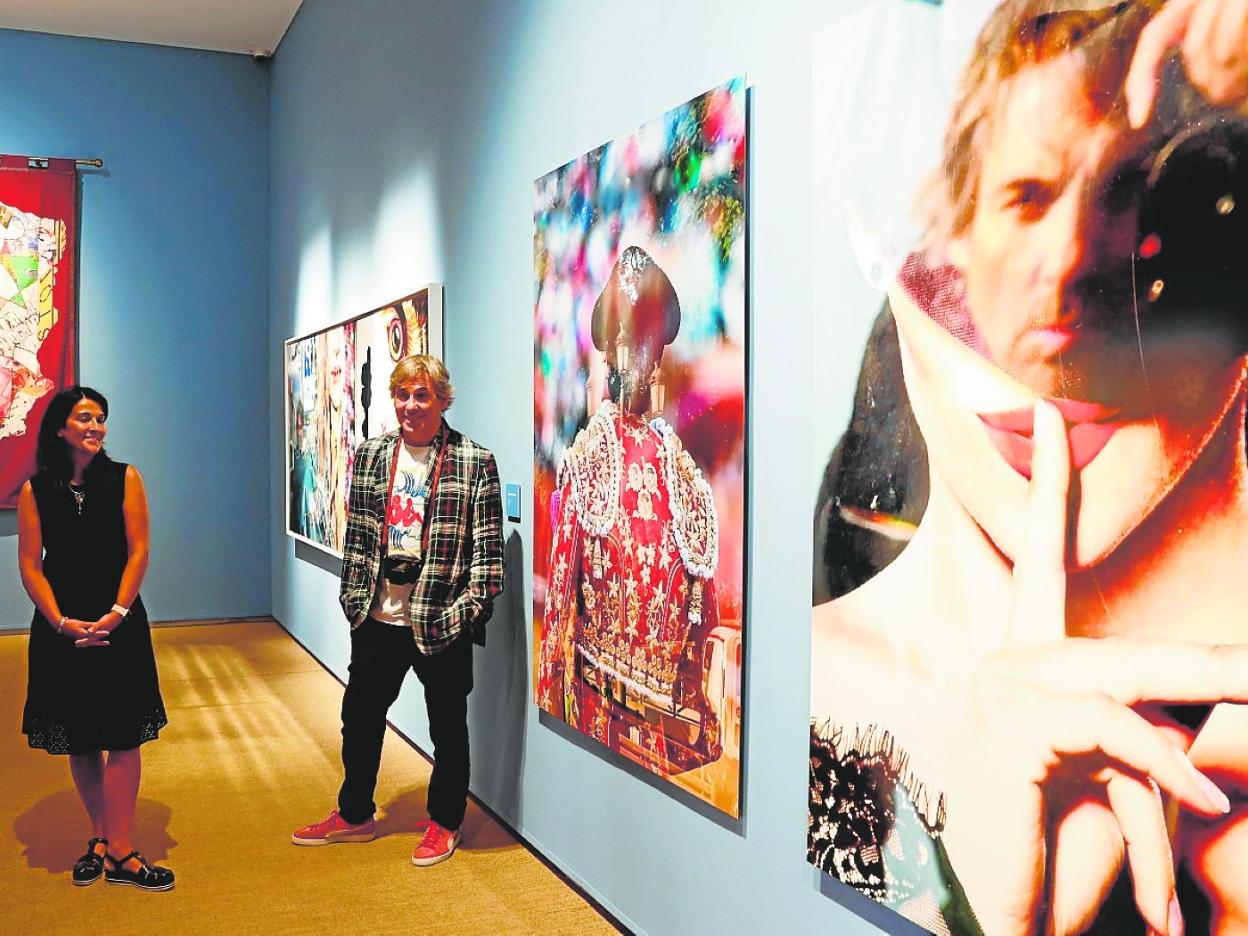
Ver fotos
Von Hohenlohe the paparazzo
Hubertus reveals his talents as a photographer in an exhibition about fame and his own life at the Unicaja Foundation Cultural Centre in Malaga
FRANCISCO GRIÑÁN
MALAGA.
Friday, 9 September 2022, 10:41
When Hubertus von Hohenlohe was young and lived in Marbella, people were always taking photos of him and he didn't understand why. He grew up under the permanent gaze of camera lenses to such an extent that they became a part of his life. Not just as somebody being observed, but from the other side: he decided he wanted a camera of his own so he could portray his vision of the world and of himself.
That is how the son of Prince Alfonso de Hohenlohe and Ira de Fürstemberg began a personal quest through images which has taken him to the frontiers of art. A paparazzo of his own life who is now displaying more than 20 years of his career in an exhibition called 15 Minutos de Fama (meaning 15 minutes of fame) in which he combines humour and irony with the sense of popularity. "Everyone takes selfies nowadays, but I started doing it ages ago," he says.
The exhibition can be seen at the Unicaja Foundation Cultural Centre in the Episcopal Palace in Malaga until 3 December.
"I believe my photos reflect the world we live in and each one is like a small documentary that gives a view of my life," says Hohenlohe, who does not hide the fact that this exhibition reflects "the search for myself through photography".
The artist is studying his own ego and takes Andy Warhol's well-known saying about 15 minutes of fame as a starting point to offer his own demystified view of the world he comes from.
So, as a type of tribute and a revisitation, Warhol himself is present in the exhibition with the photo he took of Hubertus when he was keen on olympic skiing, a picture which hangs very close to another which Hubertus took of his father, the prince, in such an unglamorous setting as a supermarket in Marbella.
"Hubertus laughs at this fame to which we all have a right, and he does so through some very powerful works," says the curator of the display, Isolina Arbulu, at the opening, before adding that in the 22 years covered by this exhibition - the most recent work is from just a few months ago - one discovers a "surprising look at the photographer himself," who offers a view that very few people ever see "on the other side of the barrier of fame".
One of the most recent photos in the display, Fireworks (2022), shows precisely this portrait of the Hohenlohe world, with the photographer reflected in a large shop window in which several dummies regard him with a cold stare, while a fire engine also crosses the scene to put out the continual fire in which the society of today seems to live.
This leads on to the 'Who is who inside of me' room, in which he portrays Lenny Kravitz and his love of photography, Nikki Lauda reflected in the fuselage of the plane that flew him from Malaga to Ibiza and the "mambo queen of Marbella," Gunilla von Bismarck.
As he tours the display in the company of Emilia Garrido, the head of Plastic Arts and Museum Spaces at the Unicaja Foundation, Hubertus von Hohenlohe paused in front of a photo he had taken of Zidane, looking out at the Santiago Bernabéu pitch through a glass window. That was a session when no makeup or lighting was needed and it lasted barely six minutes. The footballer was surprised and asked to see the result, so the photographer loaded it onto his computer and showed it to him on the screen. Zizou picked up the laptop and walked around the whole changing room, showing it to Beckham, Roberto Carlos...
"The best photo is the one you don't think about and that's why they often only take me two or three minutes because after that people are no longer authentic and the best shots are the first ones you take because of their spontaneity," he says.
Like Alfred Hitchcock
Hubertus also appears in these portraits of famous people, normally reflected in mirrors or glass, a fleeting presence which he compares with the appearances of Alfred Hitchcock in his own films, reinforcing the concept of his photos being like short films telling a story. And, if the person isn't close to him, a poster or magazine cover will do, such as the portrait of the legendary Brigitte Bardot, the personification of "seduction" and a regular at his father's parties in Marbella, he recalls.
"Obviously there is some egocentricity in the exhibition and I take so many pictures of myself reflected in a mirror because I look better that way," Hubertus says ironically, referring to his own over-exposure in this display, in which he also plays with formats, such as a stained glass window made from snapshots - very suitable for the Episcopal Palace – or a tapestry which ends the exhibition and sums up the influence Spain has had on his life: it includes the swimming pool at the Marbella Club, the front cover of the Hola magazine which they always had at home, his love of bullfighting and the Goyesque bullfight in Ronda and the football matches he watched in the Barça stadium.
"With technology, we have lost our roots and the beauty of Andalucía is that it knows how to celebrate its character and preserve it," Hubertus says.

Comentar es una ventaja exclusiva para registrados
¿Ya eres registrado?
Inicia sesiónNecesitas ser suscriptor para poder votar.